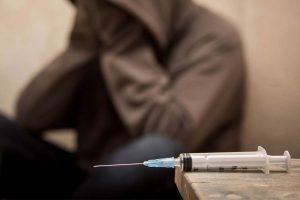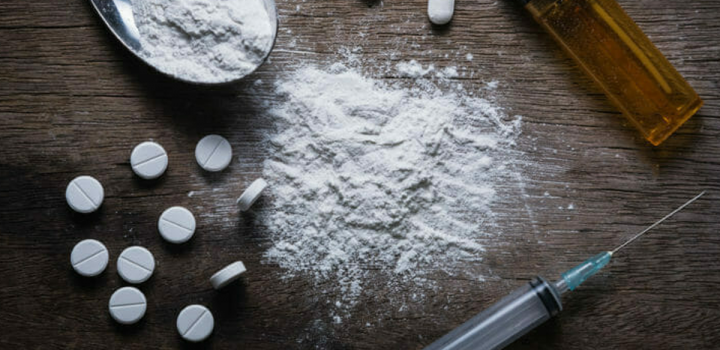Rehab is effective. However, every individual’s journey in overcoming drug addiction is unique. While some can sustain recovery throughout their lifetime, others would potentially meet episodes of relapse not only once, but twice or more.
With the increasing number of people who are suffering from drug addiction as well as overdose, there is no better way to intervene in this problem than through treatment. Although there is no standard way of measuring the success rate of rehab care, there are testimonials and internal studies that prove that treatment can lead to a significant result.
What Makes Relapse Happen After Heroin Rehab?
 Relapse is a common occurrence, especially a few months after completing rehab. This is why addiction specialists always stress the importance of attending relapse prevention programs devotedly.
Relapse is a common occurrence, especially a few months after completing rehab. This is why addiction specialists always stress the importance of attending relapse prevention programs devotedly.
Heroin is one of the major substances that cause high rates of relapse. It is a potent substance that changes the way the brain works, making it difficult for a person to overcome stress and create sound decisions. This is the reason why choosing to stay sober can be an ultimate struggle, especially among those who have been highly intoxicated by the drug.
Relapse also commonly occurs among those who have not received the right help for underlying issues. For instance, an underlying mental health problem that is left untreated can trigger a relapse.
Oftentimes, mental health problems such as depression or anxiety are either a cause or an effect of addiction. These co-occurring disorders require a specialized treatment that not all rehab facilities offer. Finding the right rehab care is also essential in preventing relapse.
Other factors that can potentially lead a person to relapse include any of the following:
- The duration of the treatment is not enough. While a 90–day program is considered ideal, the minimum length of treatment is 30 days. This may not be enough for some cases of drug addiction.
- The rehab programs were subtly neglected. Some patients join therapy sessions but choose not to fully divulge their real situation. Appropriate help cannot be provided to a person who is reluctant to fully engage in the treatment plan.
- Individuals fail to engage in post-rehab programs. This makes them highly susceptible to relapse because transitioning from rehab care to self-care can be overwhelming.
- The patient is immersed in the wrong environment. If a person is surrounded by places, things, and people that potentially trigger addiction, that is the wrong environment. There is no type of strength to overcome that but to move away.
By understanding these occurrences as a trigger for relapse after treatment, it would be valuable to ensure that you are aware of both your internal and external disposition so that you can seek help when the need arises.
How To Ensure A Successful Heroin Rehab Treatment
 Successful treatment requires three things: customization, constant evaluation, and modification of the treatment plan. You need to also find the right partner during treatment. Choosing a certified treatment facility helps in achieving your goal of overcoming your addiction and sustaining recovery.
Successful treatment requires three things: customization, constant evaluation, and modification of the treatment plan. You need to also find the right partner during treatment. Choosing a certified treatment facility helps in achieving your goal of overcoming your addiction and sustaining recovery.
More than that, your commitment to this goal also matters. You need to be honest with yourself most of the time and never hesitate to call for help when you think that you are struggling with something. Some people feel less of themselves when they encounter personal challenges and instead of asking for help, they choose to resolve it themselves.
Once you step out of rehab care, you have to continuously devote your time to taking post-rehab programs. Recovery is a lifelong journey that must not be taken for granted, not even once in your lifetime.
The risk for relapse can happen at the most unexpected time, even to those who have already enjoyed a long period of sobriety. The privilege of having support from families and friends, from your healthcare staff and support group, truly matters during this point.
What Makes The Right Rehab Facility For Heroin Addiction?
 The right rehab facility for drug addiction is certified by an accrediting body, equipped with highly trained healthcare staff, and is most accessible to you.
The right rehab facility for drug addiction is certified by an accrediting body, equipped with highly trained healthcare staff, and is most accessible to you.
Before anything else, search for the nearest rehab facility in your area. Inquire about the cost of their treatment and whether they accept insurance programs or do they have friendly payment schemes for their patients. These details can come in handy once you start trimming down your options.
Second, choose a rehab facility that is certified by the Commission on Accreditation of Rehabilitation Facilities (CARF). If so, this is a good sign that this facility offers high-quality programs that are designed for the specific needs of individuals suffering from drug addiction.
Third, check on the rehab programs available in the facility. Choose one that offers evidence-based therapies such as Cognitive Behavioral Therapy (CBT). Also, take a look at the background of their healthcare staff. Make sure they are medically trained professionals and competent in their field.
Lastly, take the time to read reviews or testimonials about the services of your preferred rehab facility. This will give you a gauge of how the rehab center can potentially serve your needs and preference.
What Makes Drug Rehab Treatment Work?
Combined medically assisted treatment (MAT) and behavioral therapy are considered ideal treatment plans for heroin addiction. Research shows that this kind of treatment plan significantly aided patients from experiencing a relapse. For about three years, the relapse rate among these patients reduced to only 39%.
MAT refers to the use of FDA-approved medications for opioid withdrawal during treatment for heroin addiction. Although this method leads to significant outcomes, medical experts note that MAT is not approved for all. To determine whether this treatment works for you, you should discuss this with your physician.
On another note, the use of Cognitive Behavioral Therapy (CBT) is the most recommended approach during treatment. This program helps patients identify the root cause of their addiction, analyze their potential triggers, and eventually, establish ways to help them cope with these inevitable circumstances.



